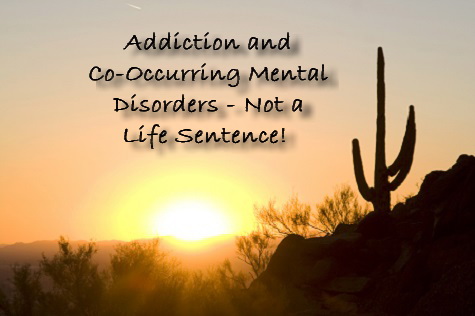Coroner Rules Cory Monteith’s Death Due to Heroin and Alcohol Use
According to the U.S. Department of Health & Human Services, heroin addiction is a chronic, relapsing brain disease. With intermittent abstinence, the body loses its resistance to the user’s drug of choice, which makes overdosing more of a probability. Some believe this might have been the case with Glee actor Cory Monteith.

Courtesy of: www.hdwallpapersinn.com
Canadian-born Monteith, 31, was found dead in a Vancouver hotel room in July alongside a hypodermic needle and spoon covered in drug residue and two empty bottles of champagne. He played the hunkish Finn Hudson on the show, a character with a heart of gold.
The coroner’s report found that Monteith succumbed to a mixture of alcohol and intravenous heroin use, with the death ruled accidental. He was alone at the time.
Young Celebrities Who Have Died From Drug Abuse
In recent years, a handful of actors have failed to live out their 30s because of addiction: River Phoenix collapsed outside a popular Hollywood nightclub in the early 1990s after overdosing on a combination of heroin and cocaine; Heath Ledger died a couple of years ago after succumbing to prescription drugs; Corey Haim, a 1980s child star who battled addiction since he was 15, died in 2010 after taking several forms of depressants and an anti-psychotic drug.
Monteith’s Early Drug Use
In Monteith’s case, he came out to the media with his drug problems, saying he began smoking marijuana at 13 and was abusing hard drugs by 16. He admitted to one publication that he felt lucky to be alive after some of the drug-fueled episodes he had gone through.
Every year more than 200,000 heroin addicts are imprisoned. So what can be done to help?
Naltrexone For Reversing Effects Of Heroin Overdose
Naltrexone is a drug that reverses the effects of a heroin overdose, but it’s been shown to be ineffective as an addiction treatment drug. Other drugs used as treatments are more addictive than the heroin addiction they’re supposed to be treating. At present there is no pharmaceutical cure-all for addiction.
Silver Lining – Cory Monteith’s Fan’s Learning Of Drug Abuse’s Dangers
Experts agree that if heroin addiction is perceived and treated as the chronic brain disease that it is, the stigma surrounding the issue will be lessened and more treatment avenues will be established. While Monteith’s case is tragic, it’s possible that his young fans may have learned about the dangers of drug abuse instead of following down his path.
Amelia liked to think of herself as a survivor—soft but strong, able to persevere. Raised by a mother with mental illness, she knew a lot about how to handle difficult people and delicate events; it seemed she’d been walking on eggshells for as long as she could remember. Her father had left when she was 12 and the care and keeping of her mother, who only grew more unstable as a result, had fallen exclusively to Amelia. By the time she was 17, she was an expert on her mother’s medical records, how and when she needed to take her medication, and was working to support the two of them. She never made it to college. Maintaining a full-time job and the constant attention required in the care of her mother didn’t leave time for school.
As anxiety settled in throughout her 20’s and with the occasional “dark moods” that lasted months sometimes, Amelia found herself less and less capable of enduring not the physical hardship, but the psychological. Still, she wanted nothing to do with therapy; why should she spend upward of $100 an hour talking about herself? Life was just the way it was. When headaches started to overtake her, she finally saw a doctor.
Offering her full history to the small town general practitioner, Amelia was persuaded to provide a background. She discussed not only her unrelenting headaches but also the steady sense that things simply weren’t right—how she shook nervously and sweated. Her GP prescribed benzodiazepines to be used for acute episodes of anxiety and opiates for what he determined were migraines.
For a while, Amelia found comfort in the hypnotic quality of the drugs. It was as if she were floating somewhere just outside herself and nothing could harm her there. As weeks and months wore on, however, Amelia discovered that the recommended dosage no longer treated her anxiety or her pain. She began to increase her dosage. When she was threatened with eviction after one of her mother’s “incidents”—she’d taken after the neighbor with a garden hoe—it all became too much. Amelia made it through the experience relatively unscathed, but she’d discovered something useful to her: her medications were more powerful when combined with wine.
It wasn’t until a friend noticed how much Amelia was taking that she questioned it herself. She realized she’d been relying exclusively on the medication and the sense of escape it gave her, taking it every four hours whether she needed to or not. But when she tried to quit she discovered something even more alarming—she couldn’t.
Gendered Differences in Addiction
The CDC reports that between 1999 and 2010, opioid overdose deaths among women increased fivefold, while the numbers for men increased three times. Since 2007, more women have died from prescription overdose than in car accident related injuries, cervical cancer or homicides. Further studies reveal that while women tend to become addicted later than men, they do so more quickly. Once addicted, women are more vulnerable to relapse, and are less likely to seek treatment than men. According to Constance Scharff, Ph.D., “Women most often use drugs to deal with stress and regulate moods.” Women are prescribed potentially addictive medications more often than men, and for longer periods. This may be because women are speaking more openly with their doctors about both physical and psychological complaints, but the reasons are not entirely understood.
Prescription drug dependence may go unnoticed even to the user—many believe that because the medications are prescribed, they are safe. When more than the recommended dosage is being used and for longer than is required and when symptoms of withdrawal (such as nausea, agitation and sleep disturbance) occur at the cessation of the medication, addiction should be considered.
High-Risk Group
Recovery from prescription drug dependence is as important as any other addictive substance or process. The White House considers women to be among the top three high-risk groups for addiction, and looking at the numbers for accidental overdose deaths, it is no wonder. Long term abuse of certain addictive prescription medications, such as the benzodiazepines, carry potential consequences: “over sedation, impairment of memory, balance and learning, depression and emotional blunting.”
Treatment for Prescription Drug Addiction
Treatment for prescription drug addiction is similar to other treatments for addiction; it consists of a behavioral component wherein addicts learn to cope with life stress or physical pain without the use of medications, and where previous users are taught to become self-observant and proactive when cravings arise. There is evidence that psychotherapy in combination with NA group attendance, or another form of collective substance abuse support, can be effective in helping women recover. Given the high pressure lives that so many modern women contend with—where work outside the home is a foregone conclusion even while work inside the home does not diminish—the stress and pain that lead many down the slippery slope of secret addiction is unsurprising. What is most important is that women like Amelia find the help they need to recover—including doctors who better understand the risks of prescribing medications known to create dependence.
Daphne sat across the table from her husband and mouthed the words, “I hate you.” Then she painted a charming smile on her face and ordered a salad. She and Sam were out to dinner with his family, something they did only rarely because of what Sam’s mother referred to as “Daphne’s drinking problem.” What no one at the table knew was that Daphne had a gram of cocaine in her clutch and no plans to drink more than one cocktail. To everyone’s surprise, a single margarita is all she had that night.
For the next four weeks, Daphne’s behavior was erratic. She didn’t find herself sneaking bottles of wine or vodka, passed out on the sofa in front of the television or lying in the floor of their shared walk-in closet, crying her eyes out over every conceivable wrong done to her in the past. Instead, she was scarce, hardly ever at home. When he did see her, she was wild with energy and ideas, frenetic to dress and shower and be off again. Her already thin frame appeared unusually slight. It didn’t look as though Daphne had been eating, or really doing anything but moving, fast.
Then on a Sunday afternoon, just like it had started, Daphne was suddenly home again—collapsed on the lawn, so drunk Sam could nearly smell the alcohol from the front door. Ever the co-dependent faithful partner, he walked to his wife and bent to scoop her into his arms. And just like clockwork, Daphne began to slur a litany of praise for her husband, how she could not live without him, how he was perfect in every way.
Days into Daphne’s return, however, she was threatening to stab herself with a kitchen knife if Sam didn’t give her access to all of her pain medication. Daphne received prescription opiates for a cracked cervical vertebra, and Sam sometimes hid them when Daphne’s drinking binges got especially bad. When she took the knife and started carving shallow cuts into the inside of her arm—something Daphne had done many times before, but always in private—Sam knew it was time to do what he had not yet done. He had his wife involuntarily hospitalized. An emergency hospital stay turned into a longer, voluntary in-patient psychiatric stay, and it was there that Daphne was formally diagnosed.
She was an alcoholic. She was a drug addict. She had anorexia. She had bipolar disorder. And she had borderline personality disorder. No one had expected this outcome, least of all Daphne.
Mental Disorders and Addiction
When a person has both a problem with addiction and a mental disorder, he or she is said to have a dual diagnosis (or comorbidity). Many times, substance abuse can mask the signs of mental illness. Traits or characteristics of mental illness, which may otherwise be quite noticeable to close family members and loved ones, cloak themselves in the depressed behavior brought on by excessive alcohol use (alcohol is itself a depressant), or the erratic behavior others exhibit whether using alcohol excessively or when high or seeking drugs.
People with certain mental disorders may seek to “self-medicate” the anxiety or depression that arises as a result of the disorder by consuming alcohol or using drugs, or a combination. One such disorder is bipolar disorder. About 56 percent of people with bipolar have experienced drug or alcohol addiction. The personality disorders, such as borderline personality disorder (BPD), also share a high rate of dual diagnosis. According to the Center for Drug and Alcohol Programs at the Medical University of South Carolina, “Over 50 percent of drug abusers and almost 40 percent of alcoholics have at least one serious mental illness.”
Besides bipolar and BPD, depression, anxiety disorders, schizophrenia and other personality disorders frequently co-occur with substance abuse. Psychiatric issues can begin before or after the onset of substance abuse.
Treatment for the Dual Diagnosed
There is no question that adding disorders and substance issues to the mix significantly compounds an individual’s stress and further complicates treatment options. Those who have co-occurring mental disorders have a higher rate of relapse when it comes to getting sober. But even people with mental disorders and co-occurring substance abuse issues can begin to heal. What helps is an integrated therapeutic approach—where mental health treatment and addiction recovery are not thought of as separate, but fused into an integrated whole. Compartmentalizing too many areas of her life is often how an addict with mental health issues gets to the place in which she desperately needs recovery, so seeing her life as a working whole is important.
Thinking, “I cannot attend to my sobriety if I do not attend to my bipolar disorder” and vice versa is a good way to think about it. It’s quite true, in fact—not simply a bromide offered by practiced faces in the business of therapy.
While Daphne’s situation may seem extreme, it is likely that the deeper part of her issues are connected. When she begins to do the work to unravel what the deeply held beliefs and long-held stories that most affect her mental state are, she may begin to find herself experiencing better balance—and an ability to deal with the boat-rocking experience of finding herself with a half-dozen labels, all too frightening to think about in the beginning.
Becoming educated about the nature of addiction and the reality of mental illness is a good place to start. Choosing to look at one’s life carefully is the opposite of what addiction means. When you wrestle the hydra of addiction and mental illness, you know you’re only going to get more of the same. Better not to go in swinging but with clarity, a willingness to learn and possibly, maybe, a little bit of room for something like hope.
18 Mar 2013
Chemical and Emotional Dependence
Dependency is another word for addiction. If you are dependent on alcohol, for instance, you are addicted to that substance and you are an alcoholic. What most of us think of when we give any consideration to the disease that is addiction, we are thinking of chemical dependency. This is the inability to stop using a substance because of chemical interactions between the drug and the body. Substance abuse and addiction are not that simple, however. If they were, we might already have a cure. Psychological or emotional dependence adds another, in some ways more complex, aspect to addiction.
Read More
04 Mar 2013
When the ‘Whys’ are Lies: Eleven Lousy Excuses from Addicts and Alcoholics Who Won’t Stop Using or Drinking
Perhaps ‘lies’ is not the right word.
‘Rationalizations’ might be a better choice. But whatever word we choose, few are better at making excuses for self-destructive behavior than addicts and alcoholics, who always have dozens of good reasons to explain why they do what they do. Firmly entrenched in their denial, practicing substance abusers are totally convinced there is nothing really wrong with them and that anyone who claims there is doesn’t know what she is talking about. Rather than seeing themselves as victims of substance abuse, as crazy as it sounds, addicts and alcoholics who are still in the denial stage actually believe they are being victimized or betrayed by the people who love and care for them. This is obviously a distortion of the truth, but the ability addiction has to warp the minds of those it has enslaved never ceases to amaze even the most experienced addiction counselors.
Read More
Alcohol and all commonly abused drugs alter your experience of reality by altering the levels of chemicals in your brain known as neurotransmitters. Generally speaking, problems with alcoholism and drug addiction begin when your brain gradually adapts to the long-term changes in neurotransmitter levels. In the scientific community, much of the focus on abuse- and addiction-related brain changes has centered on dopamine, a neurotransmitter that plays a key role in the normal function of the brain’s pleasure centers. However, altered levels of another neurotransmitter, called glutamate, also contribute to the onset of addiction by changing the ways in which you learn, make decisions and engage in other basic thought processes.
Read More
Celebrity Russell Brand shares his thoughts in a recent article about a different approach to dealing with those who are caught with illegal drugs. He believes that rather than locking them up in jail, they should be sent to rehabilitation for the addiction.
Read More
Rehabilitation centers were created as ways to provide a separation of the addict and the abused substance. Originally known as “sober houses,” drug rehab facilities served a purpose that by some estimates, only affected a specific portion of the population.



